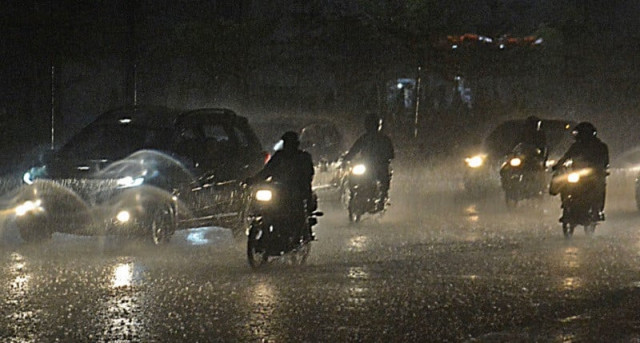El Niño-induced weather to grip country in April
NDMA predicts rain, dust-storm, thunderstorm, hailstorm for upcountry areas

The National Disaster Management Authority (NDMA) has warned of rain, dust storms, thunderstorms, hailstorms and heatwaves across the country because of the weather impact taking place during the month of April.
According to a press release, the NDMA Tech Team and the Pakistan Meteorological Department (PMD) predicted that there would be an overall tendency towards near normal rainfall – based on 30 years average from 1991 to 2020 –in most parts of the country.
However, the NDMA advisory warning added, that the northern half of Pakistan, comprising northern Punjab, Khyber-Pakhtunkhwa (K-P), and Azad Jammu and Kashmir (AJK), were expected to receive slightly above normal rainfall this month.
"Furthermore, it is expected that the daytime maximum temperatures are expected to remain normal to slightly above normal, based on the 30 years average. Warmer than the normal minimum temperatures are expected country-wide.”
“The maximum positive departure in temperature – both minimum and maximum – is expected over the northern parts of the country, especially Chitral, Dir, Kohistan, Shangla, Swat and Malakand districts in northern K-P; all districts of Gilgit-Baltistan (G-B) and Neelum in the AJK," the NDMA said.
Read also: Moderate rain expected in Karachi on Saturday
In the news release, the NDMA explained that the positive phase of the El Niño Southern Oscillation (ENSO) was expected to make transition towards a neutral phase along with the prevailing neutral phase of Indian Ocean Dipole (IOD).
It added that impacts of the predicted hydro-meteorological conditions, which were expected to prevail across the country, include strong winds, dust-storms, thunderstorms, and hailstorms because of the expected temperature gradients across the country.
“It is expected that increased temperatures may lead to heatwave conditions in plain areas of the country, especially in Punjab and Interior Sindh. Furthermore, urban areas of the country may face heatwave conditions due to urban heat islands effect,” it said.
“Increased temperatures in northern Pakistan, especially in mountainous areas of K-P, G-B, and AJK may lead to avalanches in at-risk and vulnerable snowbound valleys,” it said, adding that there was also an increased risk of glacial lake outburst floods (GLOFs) in these areas.



















COMMENTS
Comments are moderated and generally will be posted if they are on-topic and not abusive.
For more information, please see our Comments FAQ